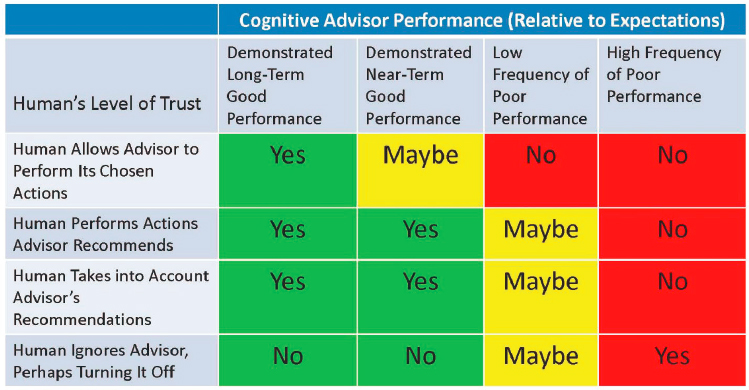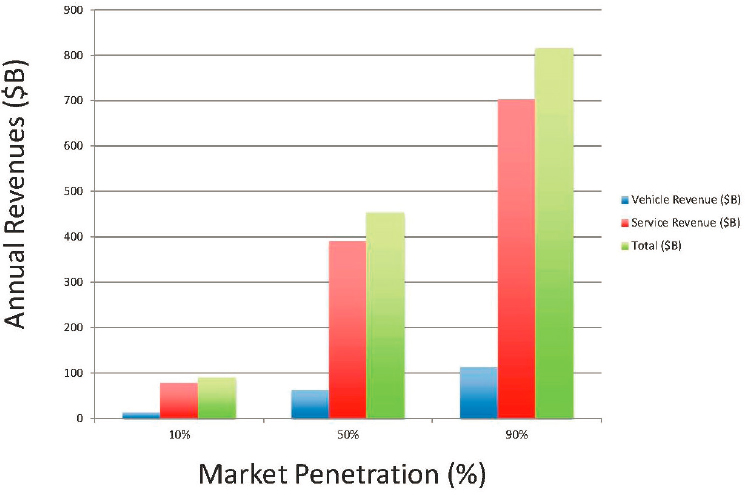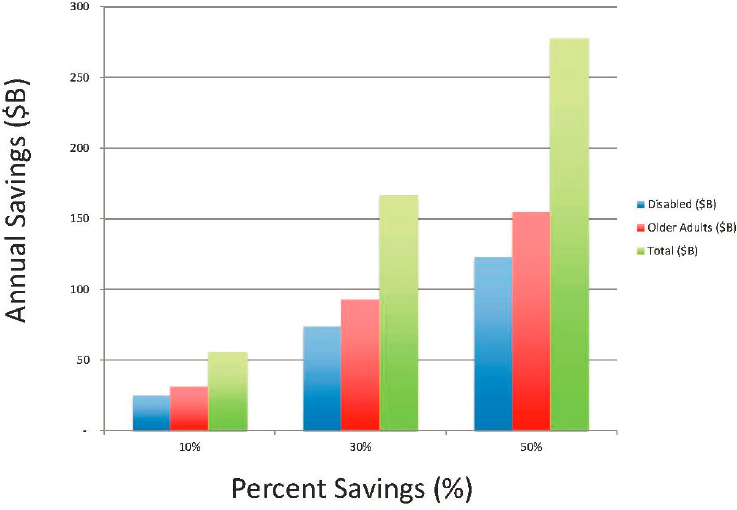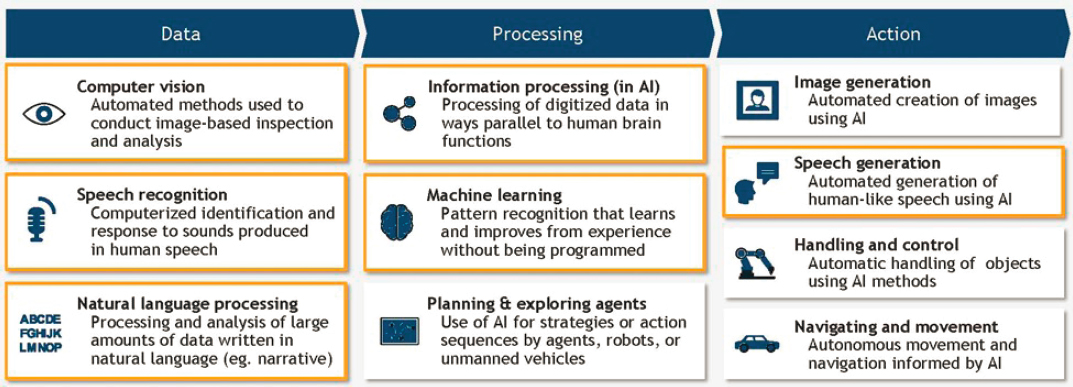The final session of the first day of the workshop examined how data, digital technologies, and artificial intelligence (AI) can transform urban health. The three speakers were Gordon Feller, founder of Meeting of the Minds; William B. Rouse, the Alexander Crombie Humphreys Professor and director of the Center for Complex Systems & Enterprises at the Stevens Institute of Technology; and Adele Waugaman, senior advisor for digital health at the U.S. Agency for International Development (USAID). Ann Aerts moderated an open discussion after the three presentations.
CAN SMART CITIES DELIVER MEANINGFUL HEALTH BENEFITS?
Urbanova1 is a nonprofit public–private partnership (PPP) in Spokane, Washington, that aims to address urban health and community development challenges using the power of data and digital technology, explained Gordon Feller (Meeting of the Minds). Partners in Urbanova include companies such as Verizon, Itron, Avista, and McKinstry; Meeting of the Minds, a nonprofit organization; the Elson S. Floyd College of Medicine, College of Nursing, and Voiland College of Engineering and Architecture, Washington State University; and the city of Spokane, which Feller noted is an economically distressed city that experiences significant air-quality problems related to seasonal wildfires. In fact, he added, it was a wildfire-triggered, 4-day, air-quality catastrophe in August 2017 that led Urbanova to move from being someone’s good idea to becoming a mission-driven organization working on solutions.
Given that regional wildfires are beyond Spokane’s control, Urbanova focuses some of its efforts on transportation, another important contributor to air quality. In this domain, it first used the city’s existing network of air-quality sensors to generate accurate readings of air pollution levels and to build a graphical user interface or dashboard that could deliver insights from sensor data to the public. For example, individuals might consult the dashboard to see if riding their bikes to work might be unhealthy given current levels of air pollution. Similarly, an employer might consult the
___________________
1 More information is available at https://urbanova.org (accessed October 16, 2020).
dashboard to see if employees could safely work outdoors. Feller reflected on research published by Meeting of the Minds and noted the importance of creating a system that could provide real-time, actionable insights. He said, “Historical data are interesting for academics and policy makers, but it is not necessarily great for the bus driver or the bus passenger to know anything except real-time information.”
When it was time to expand the sensor network, several practical issues needed to be addressed, such as who owned the street lights and poles on which the sensors would be installed, who owned the wireless network over which data would be transmitted, and who was able to do the engineering analysis in real time to produce actionable insights. Feller noted that hard work and fundraising were involved in answering these questions in the context of a PPP. Philanthropies had trouble deciding how to work with an entity that was not solely for-profit, nonprofit, or government. In addition, different stakeholders had different ways of measuring success, which, Feller said, increased the importance of figuring out how to converge various success metrics.
A particular problem for information technology companies that want to get involved in this type of PPP, Feller said, is that the price of connectivity, data storage, and computation are moving rapidly toward zero. He noted, “That is not a very good thing if you are running a business that is providing connectivity, computation, and storage, but it is great for the rest of us who are not running those businesses and want to take advantage of it.” In closing, he noted that technology companies therefore need to develop new business models for a world where silicon chips or sensors are moving toward pennies per unit.
INTELLIGENT TECHNOLOGIES FOR URBAN DISABLED AND OLDER ADULTS
William Rouse (Stevens Institute of Technology) started his presentation on how technology can help the 100 million disabled and older U.S. adults remain mobile by citing the three rules for successful old age that are proposed in the book Being Mortal: retain a sense of purpose, maintain social connections, and stay mobile (Gawande, 2014). Assistive technologies (e.g., transportation, work coaches, and counseling coaches) can help disabled and older adults travel to work or help them age in place and remain in their homes, Rouse said. He added that new combinations of competencies, such as people qualified to serve as consumer-facing technology assistants, will be needed to realize the potential of assistive technologies.
One of the biggest needs among disabled adults is transportation to and from the workplace, and both disabled and older adults need to be able to engage in daily activities. Rouse said assistance for these two
groups includes complementary support in physical, sensory, and cognitive domains. Cognitive assistance, powered at least partially by AI, could include smartphones, tablets, and driverless cars, but such technologies need to interact seamlessly to provide the best assistance. He explained that work coaches, available via users’ smartphones, can use AI, positional data, and knowledge about individuals and work environments to tell users what tasks to perform, where to perform them, and how to carry them out. His team, in fact, has deployed a work-coach app at 19 military commissaries and grocery stores to help workers restock shelves most efficiently.
Given that some disabled and older adults may have mental or cognitive challenges, a smartphone app-based counseling coach may help individuals overcome frustration and manage anxiety. A counseling coach could also provide messages to help individuals overcome fears about making mistakes on the job, for example, or manage anger when tasks do not go as planned (Hoffman et al., 2019; Jorge, 2001; Rouse and McBride, 2019). Rouse noted that his team’s work-coach app is already deployed, and the counseling-coach app has progressed far in the development process. So far, he added, the work-coach app has improved performance ratings and job retention among individuals who have used it. Rouse explained that an important consideration regarding the role that AI can play in creating and operating these cognitive assistants will be how much users trust the results of AI (see Figure 6-1).
One of the PPPs with which Rouse and his colleagues work involves automobile companies, small AI companies, and advocacy groups that collaborate on developing driverless cars that could serve disabled and older adults. Revenues for such a system would come from a service-type model rather than from cars sold to individuals—each car is projected to cost more than $100,000 and to be too technologically sophisticated for most individuals to maintain. In fact, a modeling exercise showed that selling services would generate more revenue than selling cars would (see Figure 6-2).
Existing programs might also accrue savings given that adopting driverless cars as a mobility option might enable more disabled individuals, for example, to work instead of relying on Social Security disability checks. This model could also keep older adults out of assisted living or skilled nursing facilities (see Figure 6-3). Rouse noted that 41 percent of disabled adults receive support from Supplemental Security Income or from Social Security Disability Insurance programs at an average of $1,234 per month. While only 2 percent of older adults are in assisted-living facilities and only 5 percent are in nursing facilities, these facilities cost an average of $4,000 and $7,000 per month, respectively. Pro-

SOURCE: As presented by William Rouse, June 13, 2019.

SOURCE: As presented by William Rouse, June 13, 2019.

SOURCE: As presented by William Rouse, June 13, 2019.
jections suggest that transportation services provided by driverless cars could generate between $91 billion and $251 billion in annual revenues for market penetration ranging from 10 percent to 90 percent, and services for disabled and older adults could generate savings that range from $56 billion to $278 billion annually. Rouse said that “this is a trillion-dollar opportunity” that has made getting partners involved in this effort easy.
With so much money on the line, automakers and transportation service providers can justify substantial investments in this market—even given significant uncertainty about which players will realize the biggest pieces of the market. In addition, Rouse said, the federal government (e.g., via the National Institutes of Health and the National Science Foundation) can justify investing substantially in pursuing knowledge and technologies that will enable this market and afford various agencies substantial savings. He added that advocacy groups have successfully articulated and communicated the needs of disabled and older adults, as well as how to provide support for those needs; driverless cars can potentially enhance quality of life for this population of U.S. residents.
Rouse talked about a future of innovations in which well-developed transportation infrastructures will roll out in urban areas that are large
enough to justify required investments. He suspected that innovators will seek growth in suburban and rural regions as offerings mature. He predicted that these two trends together will create millions of new jobs, including those needed to perform nightly maintenance on fleets of driverless cars.
ARTIFICIAL INTELLIGENCE IN GLOBAL, URBAN HEALTH
By 2030, said Adele Waugaman (USAID), 60 percent of the world’s population will live in urban areas—up from 30 percent in 1950. Africa and Asia, currently home to 90 percent of the world’s rural population, are the fastest-urbanizing regions on the planet; by 2050, Africa is projected to reach 54 percent urbanization, and Asia is projected to reach 64 percent urbanization.2 She noted that nearly half of the world’s urban dwellers live in relatively small settlements of fewer than 500,000 inhabitants and that the fastest-growing urban regions are medium-sized cities as well as cities in Asia and Africa with fewer than 1 million inhabitants. (UNDESA, 2015).
These figures are relevant to USAID, she explained, because every country with USAID presence experiences urban population growth. This type of growth exacerbates problems associated historically with urban areas: extreme poverty, food insecurity, poor health, and vulnerability to risky events such as crime, forced eviction, or disaster. In addition, urban areas account for 70 percent of greenhouse gas emissions and consume two-thirds of the world’s energy. Waugaman noted that by 2040, cities will house the majority of people who live on less than $1 per day. In addition, food accounts for a significant portion of the urban poor’s household expenses, which makes them vulnerable to food insecurity during spikes in food prices. From a health perspective, she added, nearly half of city dwellers in Africa, Asia, and Latin America suffer from a minimum of one disease caused by poor sanitation and lack of access to safe water.
Waugaman said the USAID urban team has been thinking about the confluence of these factors and about how sustainable urbanization will be central to meeting many global development commitments, including the 2030 Agenda for Sustainable Development, the Paris Agreement on Climate Action, the Addis Action Agenda on financing for development, and the New Urban Agenda.3 To meet these commitments, USAID is looking increasingly to partnerships that will provide access to financing, local
___________________
2 For more information about USAID’s Sustainable Urbanization for Global Progress and Security, see https://www.usaid.gov/urban (accessed July 30, 2020).
3 For more information, see https://www.usaid.gov/sites/default/files/documents/1865/USAID_Urbanization.pdf (accessed July 30, 2020).
capacity building, big data, AI, and various other digital technologies to generate actionable insights. She cautioned, though, that the international development sector has underestimated the amount of work that digitization entails, and she underscored the need to help communities transition from paper to digitized data. She noted that capacity building will be essential to enable the world’s growing cities to use real-time data to make real-time decisions.
Changing topics slightly, Waugaman explained that the Center for Innovation and Impact in USAID’s Bureau for Global Health recently completed a report on the role that AI can play in global health (USAID et al., 2019). This report highlights opportunities for AI to increase access to care, improve equity, ensure higher-quality health outcomes, increase efficiency, and reduce the cost of care. Constraints identified in this report include limited availability of digitized data from which to draw inferences, equity issues around the suitability of using AI with specific local populations, and nascent policy and regulatory environments. The report also included a landscape analysis of existing AI building blocks most relevant to global health. It used a broad definition for AI that included machine learning and other technologies commonly lumped under the AI umbrella (see Figure 6-4).
Following this landscape analysis, the report team identified 27 different use cases covering discrete areas in which AI could be applied in global health and selected four priority areas to explore further with potential partners: AI-enabled population health, virtual health assistants for patients, virtual health assistants for frontline health workers, and decision support tools that can provide more specialized expertise for generalist physicians. Waugaman said that developing a virtual health assistant for frontline health workers is particularly important in low- and middle-income countries where dedicated community health workers, many of whom work without regular pay or extensive training, provide most care. She noted, “This is a really critical opportunity to be empowering those frontline and community health workers with decision support tools that enable them to best be able to provide care to those who are seeking it.”
However, she noted, several common challenges to scaling AI in low- and middle-income countries exist: limited data availability and quality, low levels of adopting electronic health records, business model sustainability, integration of AI into the health system, lack of required evidence that using AI affects health outcomes positively, gaps in AI building blocks and required infrastructure, and regulatory and policy issues. In addition, concerns about privacy, data ownership, and data-collection ethics will need to be addressed. For example, if AI-enabled tools only benefit people who have smartphones and 4G connectivity,

SOURCES: As presented by Adele Waugaman, June 13, 2019; USAID et al., 2019.
achieving health equity will be difficult. She also noted concerns about foreign private companies monopolizing or inappropriately profiting from health data and about patient diagnoses potentially being delivered without counseling and support.
A major challenge, also encountered in the developed world, involves how to integrate AI tools into existing health systems. Waugaman said the tools’ impact will likely be muted if the health system’s capacity to integrate and use the insights produced by these tools is insufficient. She said avoiding past mistakes will be critically important—particularly those related to inadequate interoperability and to fragmented digital health information systems that resulted from investments in prior generations of digital technologies.
Regarding actions needed to chart a collective path forward, Waugaman and her colleagues identified a range of possibilities, including providing technical assistance to innovators to help them navigate complex and sometimes contradictory regulatory environments and to enhance their business model sustainability. The report also identified various ecosystem supports that need to be in place, such as opportunities to work with partner country governments to develop enabling policies and regulations. In closing, Waugaman said people are optimistic and hopeful about this space, but the space has some significant challenges ahead.
DISCUSSION
Aerts opened the discussion by asking Feller how he decided to focus on air quality in Spokane. Feller replied that his organization hired Gallup to conduct a rigorous scientific survey of what the city’s residents felt the highest priority should be. Rouse noted that his team’s decision to work on a job coach originated with a request from Source America, which employs 50,000 disabled adults and has a stretch goal of creating technology that will enable 1 million disabled adults to be employed. Source America, explained Rouse, knew the number of employable individuals would be constrained unless employees had technical assistance to meet job requirements.
Robert Clay from Save the Children asked Feller how his team overcame a problem that can negatively affect how well a PPP operates if it is not addressed: How to decide on specific roles and responsibilities for each partner. Feller replied that one important step was to extract the partnership’s executive director from her home organization, provide her with a distinct budget, and have her report directly to the partnership’s board rather than to her home organization. His team also designated in advance what tasks were assigned to each partner—with clear lines of responsibility. He said some gray areas (e.g., cost control and data quality) existed,
and everyone had to play a role in them. However, each partner had a clear, definitive idea from the start about what its responsibilities were.
Andrew Wilson from PATH asked Waugaman how she engages the private sector to fill funding and resource gaps given that sustained business models have not yet been established. Waugaman replied that the key is to first identify and prioritize needs by bringing together stakeholders. Once a clear picture of needs is established, it becomes easier to identify where government can play a role, where international actors can provide expertise and resources, and what the private sector’s role in a project should be. She said, “I think there is a tremendous role for the private sector in almost every context. If you want to look at scalable and sustainable solutions, I think that business-sector engagement is critical.” Speaking from his experiences, Rouse added that defining a market opportunity is important to get companies interested in participating in a partnership.
Responding to a question about where to look for examples of good government partners, Waugaman noted that United Nations (UN) and World Health Organization (WHO) member states passed a digital health resolution within the past 2 years that calls for WHO to play a more active role in the digital health space. This resolution also called for member countries to build coherent national health strategies that shift investments away from digital health systems that increase fragmentation and lack interoperability. On the donor side, a set of principles for donor alignment on digital health4 now exists and should create a more coherent digital health investment strategy that leads to enhanced interoperability and reduced fragmentation. Feller commented on an understanding in the technology world: Any new technology innovation in the public sphere, such as ride-share and city streets, will have regulatory constraints from the beginning—not after the fact, as was the case with ride-sharing apps and scooters.
Jo Ivey Boufford asked panelists for their ideas on how to create a market outside of clinical services to develop technologies that examine community conditions and broader determinants of health beyond those that affect individuals. Waugaman replied with two examples where this happens. The first started with work in Haiti after the devastating earthquake in 2010 and a subsequent outbreak of cholera. In that instance, some Haitian mobile network operators were willing to provide aggregated anonymous datasets about population movement that health responders then used to predict where cholera might spread and to pre-position supplies to enable rapid response. As a second example, Waugaman cited
___________________
4 Additional information is available at https://digitalinvestmentprinciples.org (accessed October 16, 2020).
work by the UN on trends in mobile phone SIM-card top-ups as indicators of when food prices spike: A drop in top-ups implies that consumers had to spend more money on food than on phones.
KEY POINTS FROM THE DAY’S DISCUSSIONS
To conclude the workshop’s first day, Aerts listed what she believed were the day’s key points. They include the following:
- The future of planetary health will depend on cities.
- Cities have characteristics that can be positive or negative for urban health depending on the political and public will to act to improve urban health.
- The tools of systems thinking can facilitate greater reflection by encouraging people to see cities as real ecosystems with different elements that may influence urban health.
- Success depends on engaging the interests of the citizenry, giving local communities ownership over interventions, and promoting good local governance.
- A key to reaching common goals is breaking down silos between two professional communities: health and urban planning.
- Vulnerability assessment can deliver surprising results and can identify urban subpopulations that have the highest risk of developing a health issue.
- Real-time data can improve the quality of care, enable better decision making, and influence health policy.
- The global syndemic of obesity, undernutrition, and climate change introduces a new sense of urgency to tackle urban health issues in low-income settings.
- Innovative transportation models developed in Latin America could prove useful in other parts of the world.
- Big data, digital technologies, and AI can influence how researchers look at aging, how aging individuals can enjoy a better quality of life, and how cities warn their citizens of potential health hazards.
- In low- and middle-income countries, AI will potentially increase access to and equity of health care and increase quality and efficiency while reducing health care costs.
- A lack of quality digital data currently prevents full realization of the promise of big data and AI to improve urban health.
- Equity issues can be exacerbated by AI—particularly given the nascent policy and regulatory environments.












